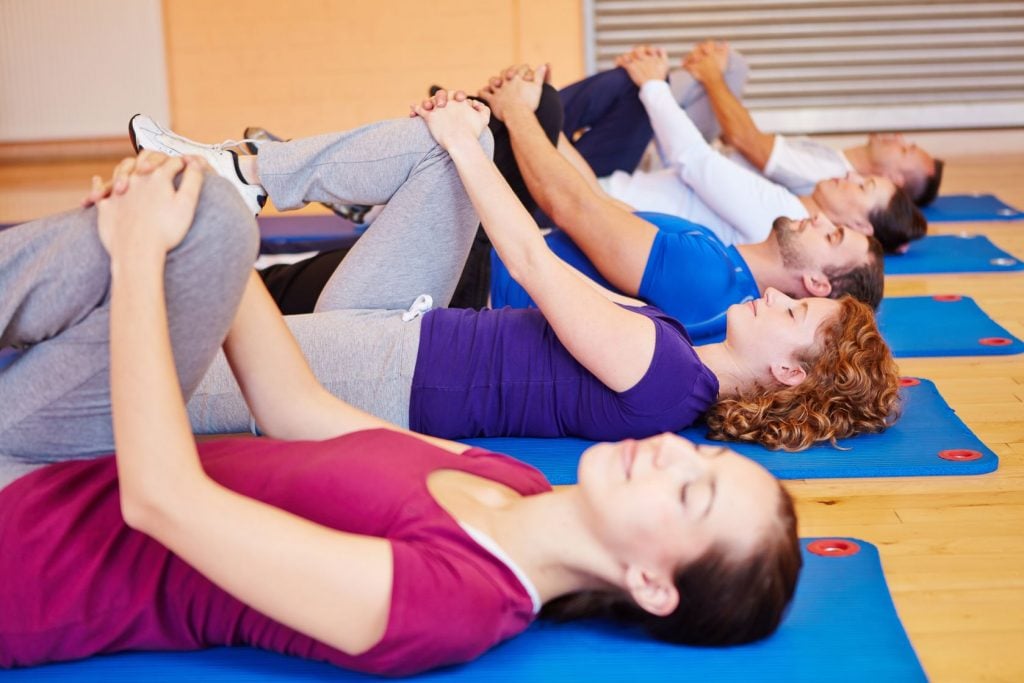Your cart is currently empty!
Learning easy graceful movement through Feldenkrais


Learning easy graceful movement through Feldenkrais
No strain, more gain with Feldenkrais
By Jodie Krantz (Physiotherapist and Feldenkrais Teacher)
The Feldenkrais Method…
The Feldenkrais Method is named after its inventor,Moshe Feldenkrais, Israeli judo master and internationally renowned physicist. By exploring exactly how we move, and then expanding our movement repertoire we not only enhance the quality of our movement, but open up all sorts of new possibilities, some of them delightful and unexpected. Feldenkrais is not primarily about exercise or therapy. It is about learning.
In “Awareness Through Movement” lessons, students are verbally guided through a series of gentle and often relaxing, (but not necessarily easy!) movements, mostly done lying on the floor or sitting in a chair.
Unusual and thought provoking, the lessons stimulate and challenge both the mind and body to find more efficient patterns of coordination that help us in our everyday lives. Students work very gently and slowly and are encouraged to do only what feels safe and comfortable for them. In “Functional Integration” students receive an individual one-toone lesson, while lying or sitting, comfortably clothed, on a low padded table. The practitioner provides the student with very gentle and respectful hands-on movement guidance.
You have to walk before
you can run…
Moshe Feldenkrais studied the way in which we learn to move as a children. Children appear to move so freely and easily, even though their
coordination may not be fully developed. They also seem to learn very quickly compared with adults. The
Feldenkrais Method takes us on a journey through the ‘basics’ of movement, often mirroring the developmental sequence. We use a ‘trial and error’ method of learning similar to that used by babies. These fundamental movements then become building blocks for more
difficult and complex actions.
Kick the habit…
Most of us, particularly as we get older, simplify our movements so that they become less varied. Have you ever noticed that you always tend to dry yourself or brush your teeth in the same sequence? Do you
cross your legs with the same leg on top each time? Do you tend to chew more often on one side of the mouth? Such habits are not usually conscious and they have the benefit that we don’t have to think about how to move every time we want, say, to get dressed or drive the car.
The trouble with habits is that they are not always the most efficient way
of moving. They often result in some parts of the body getting ‘worn out’ and other parts losing strength and flexibility because of disuse. In Feldenkrais we update and improve upon our own particular movement habits learning to move in a wider variety of different ways, so that the
wear and tear is shared more evenly.
The impossible becomes possible…
Feldenkrais is about the impossible becoming possible, the possible easy and the easy graceful.
Difficulties such as aches and pains or limitations in our strength, flexibility or coordination can motivate us to find new ways of moving that reduce the strain and restore a sense of wellbeing. For example if you can’t get up off the floor without assistance you may learn a simpler way of doing it. Or maybe you can sit
unsupported by the back of a chair, but what if it were to become so easy it felt almost effortless? Imagine rolling over in bed (easy for most
people) becoming so fluid and graceful that you find yourself sleeping as deeply and peaceful as a baby? In Feldenkrais wedon’t have to try hard to improve. Consciously focusing our awareness on how we do
things and exploring a variety of movements alternatives, begins to reprogramme the subconscious part of our brain, changing our automatic movements and posture.
You’re the boss…
With Feldenkrais lessons, you are considered to be the ultimate authority on your own body. Only you know it from the inside and especially
as your body awareness increases, you can feel whatis right for you and what is harmful. This is an opportunity to take charge of your own wellbeing. Your Feldenkrais teacher is there simply to guide you in a process of learning about yourself, from yourself.
